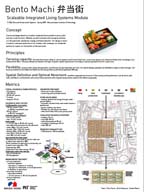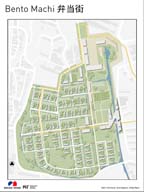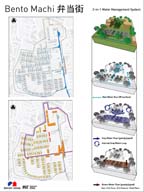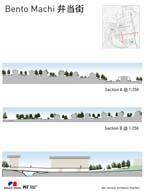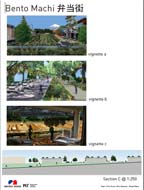Team : Chris Horne , Eirini Kasioumi , Kristal Peters
Concept: Community design based on a modular residential block scalable to serve public and town-scale functions. Modules are self-contained units managing rainwater run-off, gray water, wastewater, energy, and food production. Our design is meant to explore a site-level application of our modules, with necessary non-residential systems to support our intervention on the town scale.
Principles
Carrying capacity: the built environment relies on natural systems, which have finite limits, so we must respect and understand these limits and design in accordance
with them. Housing modules are based on the logic of system spatial requirements and imply an upward population limit for a given area.
Flexibility: programmatic needs, demographics, and demand change drastically over time. An optimal design possesses the flexibility to adapt to these changes. Our housing modules can be added and linked into the transportation grid without significant difficulty.
Spatial Definition and Optimal Movement: establish organizational structure in Tama using orienting elements such as place, path, node, axis/datum, and landmark, and connect these elements with a logical transportation network that follows topography.
